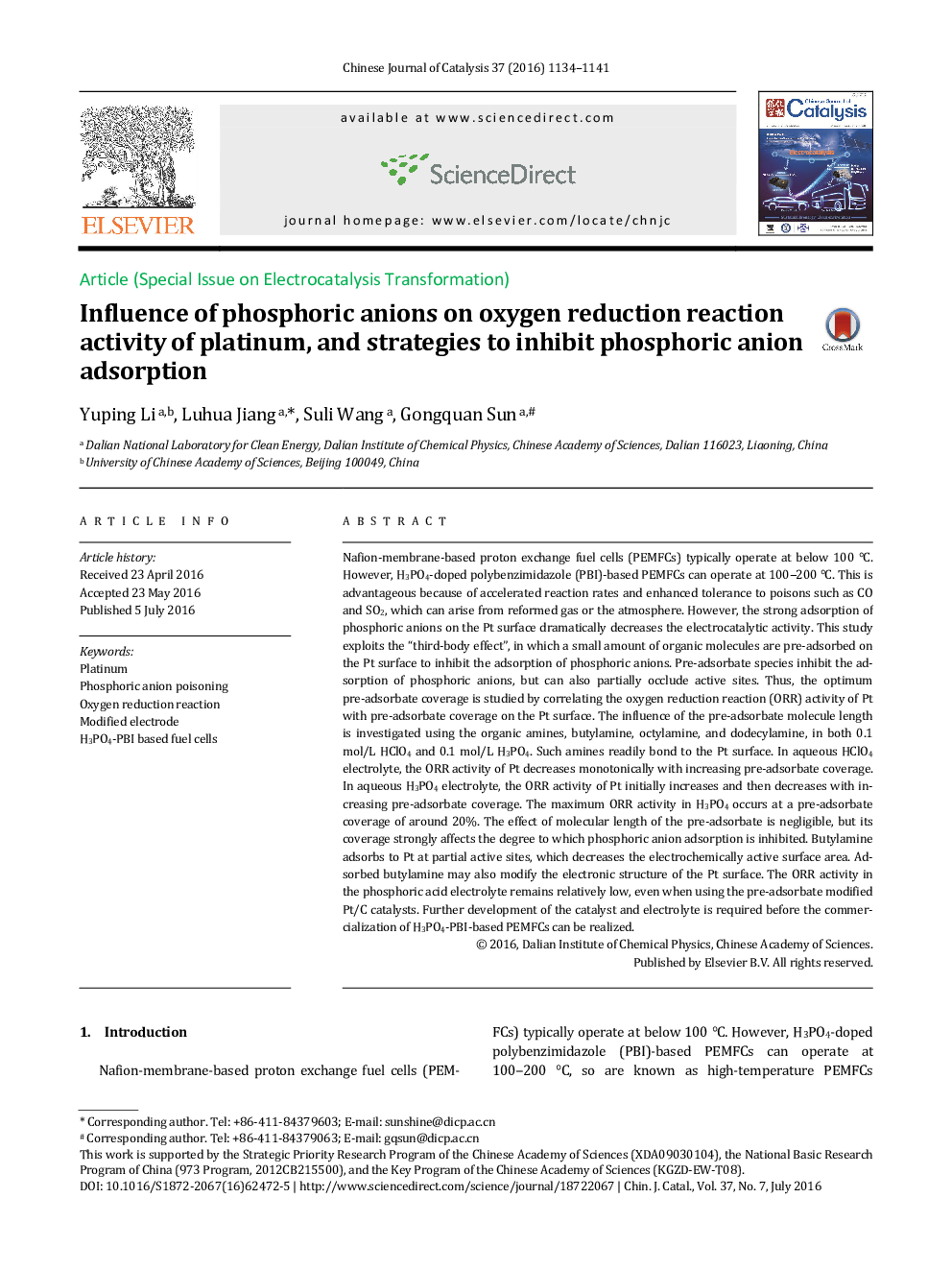| کد مقاله | کد نشریه | سال انتشار | مقاله انگلیسی | نسخه تمام متن |
|---|---|---|---|---|
| 59358 | 1419417 | 2016 | 8 صفحه PDF | دانلود رایگان |
Nafion-membrane-based proton exchange fuel cells (PEMFCs) typically operate at below 100 °C. However, H3PO4-doped polybenzimidazole (PBI)-based PEMFCs can operate at 100–200 °C. This is advantageous because of accelerated reaction rates and enhanced tolerance to poisons such as CO and SO2, which can arise from reformed gas or the atmosphere. However, the strong adsorption of phosphoric anions on the Pt surface dramatically decreases the electrocatalytic activity. This study exploits the “third-body effect”, in which a small amount of organic molecules are pre-adsorbed on the Pt surface to inhibit the adsorption of phosphoric anions. Pre-adsorbate species inhibit the adsorption of phosphoric anions, but can also partially occlude active sites. Thus, the optimum pre-adsorbate coverage is studied by correlating the oxygen reduction reaction (ORR) activity of Pt with pre-adsorbate coverage on the Pt surface. The influence of the pre-adsorbate molecule length is investigated using the organic amines, butylamine, octylamine, and dodecylamine, in both 0.1 mol/L HClO4 and 0.1 mol/L H3PO4. Such amines readily bond to the Pt surface. In aqueous HClO4 electrolyte, the ORR activity of Pt decreases monotonically with increasing pre-adsorbate coverage. In aqueous H3PO4 electrolyte, the ORR activity of Pt initially increases and then decreases with increasing pre-adsorbate coverage. The maximum ORR activity in H3PO4 occurs at a pre-adsorbate coverage of around 20%. The effect of molecular length of the pre-adsorbate is negligible, but its coverage strongly affects the degree to which phosphoric anion adsorption is inhibited. Butylamine adsorbs to Pt at partial active sites, which decreases the electrochemically active surface area. Adsorbed butylamine may also modify the electronic structure of the Pt surface. The ORR activity in the phosphoric acid electrolyte remains relatively low, even when using the pre-adsorbate modified Pt/C catalysts. Further development of the catalyst and electrolyte is required before the commercialization of H3PO4-PBI-based PEMFCs can be realized.
Graphical AbstractPre-adsorption of amide molecules on Pt surface effectively suppresses the phosphoric anion adsorption, resulting to a “volcanic” profile of the ORR activity as a function of the BA coverage on Pt surface in phosphoric acid electrolyte.Figure optionsDownload as PowerPoint slide
Journal: Chinese Journal of Catalysis - Volume 37, Issue 7, July 2016, Pages 1134–1141
